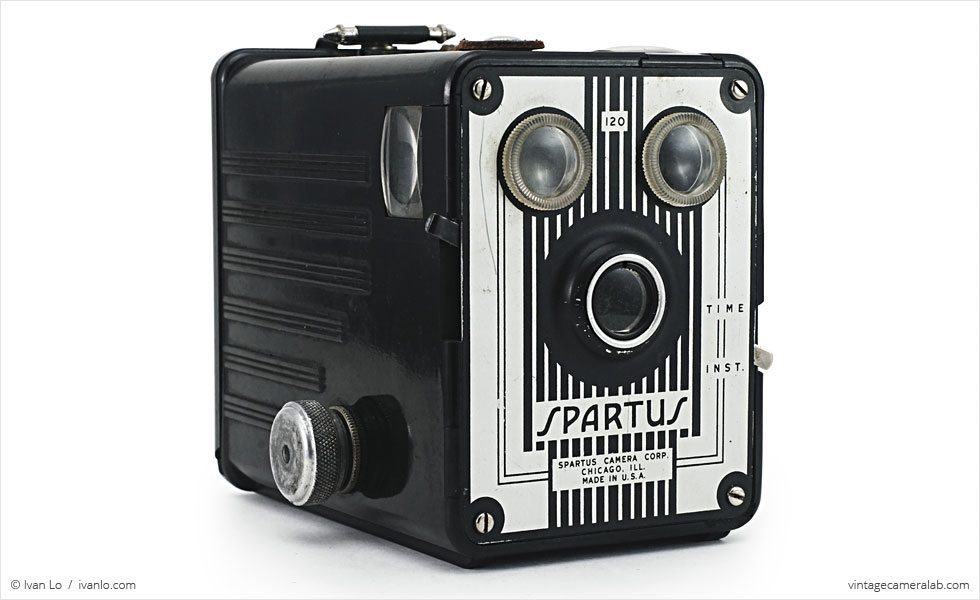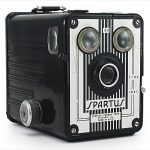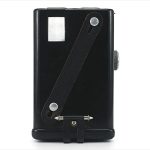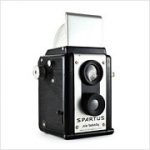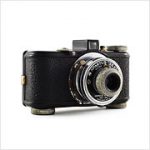Spartus Box 120 Specifications
| Manufacturer: | Spartus Camera Corp. |
| Origin: | USA |
| Made in: | Chicago, IL, USA |
| Introduced: | 1942 |
| Type: | Box, Viewfinder |
| Format: | 120 Film |
| Dimensions: | 7.6 x 10.5 x 12.6 cm |
Spartus Box 120 Overview
The Spartus Box 120 is just one in a series of no-frills box cameras introduced by Spartus in the early 1940s (not to be confused with the similarly named but clearly different Spartus 120 of the 1950s). Designed to accommodate 116, 120, 616, or 620 roll films, these models are virtually identical outside of the designated film format and faceplate design.
The Box 120 boasts a simple, fixed-focus lens that also has a fixed aperture of f/5.6. Only two shutter speeds are available: “time” (the shutter stays open for as long as the shutter lever is depressed) and “instant” (approximately 1/50 of a second) and can be chosen via the metal tab on the user’s left hand side of the camera. There are two waist-level brilliant finders: one for portrait-oriented photos at the top with the leather carrying handle and film door latch as well as one for landscapes on the side next to the shutter lever and film advance knob. The entire back plate detaches from the camera when unlatched and is featureless save for a red window (which is actually yellow on this camera) through which the user can keep track of the number of remaining exposures still on the roll.
Unlike the vast majority of the cameras in my collection, this Spartus Box 120 was kindly donated to me by a reader in Connecticut. It had been the treasured possession of her parents who used it whenever the moment presented itself and she just wanted to find a good home for it. When it arrived, I noticed that the mirrors in the brilliant finders were rattling about so I carefully removed the faceplate and glued them back into place. With that repair done, the only obvious flaws in this well-loved camera are a few scratches and scuffs as well some chipped Bakelite on the back plate. But even if it was in worse condition, it wouldn’t matter; I’m just honored that I was entrusted with this in the first place.
Find your very own Spartus Box 120 on eBay.
McKeown, James M. and Joan C. McKeown’s Price Guide to Antique and Classic Cameras, 2001-2002. (Grantsburg, WI, USA: Centennial Photo Service, 2001), p 274-275, 618.

